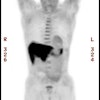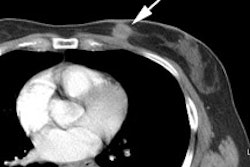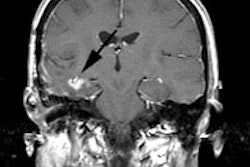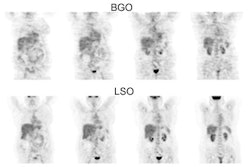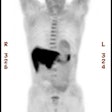J Clin Oncol 2000 Oct 15;18(20):3495-502
Breast imaging with positron emission tomography and fluorine-18
fluorodeoxyglucose: use and limitations.
Avril N, Rose CA, Schelling M, Dose J, Kuhn W, Bense S, Weber W, Ziegler S, Graeff H,
Schwaiger M.
PURPOSE: To evaluate the diagnostic value of positron emission tomography (PET) using
fluorine-18 fluorodeoxyglucose (FDG) for the diagnosis of primary breast cancer. PATIENTS
AND METHODS: Preoperatively, 144 patients with masses suggestive of breast cancer
underwent PET imaging of the breast. To identify breast cancer by increased metabolic
activity, parametric FDG-PET images were analyzed for increased tracer uptake applying
conventional image reading (CIR) and sensitive image reading (SIR). One hundred
eighty-five breast tumors were evaluated by histology, revealing 132 breast carcinomas and
53 benign masses. RESULTS: Breast carcinomas were identified with an overall sensitivity
of 64.4% (CIR) and 80.3% (SIR). The increase in sensitivity (SIR) resulted in a noticeable
decrease in specificity, from 94.3% (CIR) to 75.5% (SIR). At stage pT1, only 30 (68.2%) of
44 breast carcinomas were detected, compared with 57 (91.9%) of 62 at stage pT2. A higher
percentage of invasive lobular carcinomas were false-negative (65.2%) compared with
invasive ductal carcinomas (23.7%). Nevertheless, positive PET scans provided a high
positive-predictive value (96.6%) for breast cancer. CONCLUSION: Partial volume effects
and varying metabolic activity (dependent on tumor type) seem to represent the most
significant limitations for the routine diagnostic application of PET. The number of
invasive procedures is therefore unlikely to be significantly reduced by PET imaging in
patients presenting with abnormal mammography. However, the high positive-predictive
value, resulting from the increased metabolic activity of malignant tissue, may be used
with carefully selected subsets of patients as well as to determine the extent of disease
or to assess therapy response.
